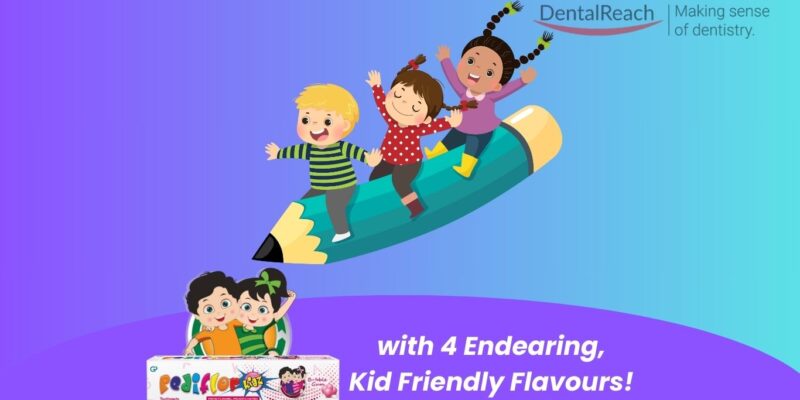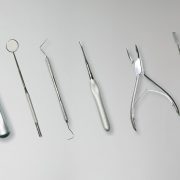Early childhood oral health represents a critical yet often overlooked component of pediatric healthcare. Pediatricians occupy a unique position as frontline healthcare providers who regularly interact with children during their formative years when oral health habits are established. Their potential to impact oral disease prevention through early detection, parent education, and timely referrals is substantial yet not fully realized. This report examines the current landscape of pediatrician involvement in oral healthcare, explores collaboration models between pediatricians and dental professionals, and identifies strategies to strengthen these interdisciplinary relationships for improved preventive outcomes in pediatric oral health.
The Pivotal Role of Pediatricians in Early Oral Health Detection
Pediatricians serve as the primary healthcare contact for most children, particularly during the critical early years of development. Young patients visit pediatricians significantly more frequently than they visit dentists, especially during infancy and early childhood. This positions pediatricians as ideal healthcare professionals to detect early signs of oral disease and implement preventive strategies before serious problems develop.
The American Academy of Pediatrics (AAP) recognizes this potential and recommends that general healthcare providers, including pediatricians, incorporate preventive oral health strategies into their patient care protocols. These recommendations include conducting oral health risk evaluations beginning at 6 months of age and advising appropriate dental referrals. Similarly, the American Academy of Pediatric Dentistry (AAPD) emphasizes that infant oral health is a fundamental building block for preventive education and dental care, essential for a lifetime free from preventable oral disease.
Despite these recommendations, research indicates significant gaps between ideal practice and reality. While many pediatricians examine infants’ oral cavities at birth (approximately 77%), and most (82%) acknowledge the importance of dental examinations before age one, only 43% are aware of the AAPD/AAP recommendations for timing the first dental visit. Even more concerning, just 11% actually advise parents to schedule their child’s first dental visit before 12 months of age. This disconnect highlights the need for better integration of oral health knowledge and practices in pediatric primary care.
Barriers to Effective Oral Health Integration
Several barriers impede the effective integration of oral health assessments and referrals into pediatric practice. The most significant obstacle is the lack of formal training in oral health care during pediatric medical education. Without proper education on recognizing oral disease manifestations and understanding preventive strategies, pediatricians may miss opportunities for early intervention.
Additionally, the traditional separation between medical and dental practice creates systemic barriers to collaboration. Many pediatricians view oral health as outside their domain or responsibility, despite the clear connections between oral health and overall physical well-being. This perception is reinforced by separate insurance systems, distinct electronic health records, and physical separation of dental and medical practices.
Case Study: Pediatricians and Dentists Integration Pilot
A compelling example of successful integration comes from a community health center in Boston, Massachusetts, which implemented an interdisciplinary care model based on the Oral Health Delivery Framework4. In this pilot program, pediatricians were trained to assess dental caries risk, apply fluoride varnish, provide educational materials to patients, incorporate oral health assessment in pediatric practice, and document preventive dental care in electronic health records4.
The results were remarkable: the proportion of well-child visits that included fluoride varnish application increased from 25% at baseline to 50.2% by the end of the pilot4. Similarly, dental assessments rose from being completely absent (0%) to being performed in 49.4% of visits4. More impressively, these gains were not only maintained but improved upon two years after the pilot ended, with fluoride varnish applications occurring in 56.7% of visits and dental assessments in 57.3%4. This sustained improvement demonstrates that with proper training and system support, meaningful integration is achievable and sustainable.
Components of Successful Integration Models
Analysis of various collaborative models reveals several key components that contribute to successful integration:
-
- Standardized screening protocols: Consistent methods for assessing oral health risk and identifying problems during well-child visits.
- Clear referral pathways: Established protocols for when and how to refer children to dental providers, with mechanisms to facilitate appointment scheduling.
- Preventive services delivery: Training pediatricians to provide basic preventive services such as fluoride varnish application.
- Parent/caregiver education: Structured approaches for pediatricians to provide anticipatory guidance about oral hygiene, diet, and the importance of dental visits.
- Information sharing systems: Methods for communication and documentation between medical and dental providers, ideally through integrated electronic health records.
Pediatric Oral Health Assessment and Preventive Services
To effectively participate in oral health prevention, pediatricians should be familiar with age-appropriate assessment and preventive services. For children from birth to two years, this includes oral health risk assessment, guidance on oral hygiene and diet, fluoride supplementation if indicated, and initial dental referrals.
For children aged two to six years, assessment should include examination of all teeth, assessment of pathology or injuries, and continued fluoride application as appropriate3. Between six and twelve years, periodic assessments should continue with attention to periodontal risk assessment and need for orthodontics as permanent teeth erupt. Throughout all age groups, appropriate referrals for identified problems remain essential.
Conclusion
The evidence clearly demonstrates both the necessity and feasibility of stronger collaboration between pediatricians and pediatric dentists. Pediatricians occupy a strategic position to impact children’s oral health through early assessment, preventive interventions, and timely referrals.
Successful models of collaboration demonstrate substantial improvements in the delivery of preventive oral health services in pediatric settings. With appropriate training, protocols, and support systems, pediatricians can effectively incorporate oral health assessment and preventive measures into their practice, complementing rather than replacing specialized dental care.
The path forward requires commitment from both medical and dental professions to bridge traditional divisions. By working together, pediatricians and pediatric dentists can create a more comprehensive approach to children’s health that recognizes the fundamental connection between oral health and overall well-being. This collaboration holds the promise of reducing the burden of preventable oral disease and improving health outcomes for all children, particularly those facing barriers to traditional dental care access.
References:
- https://journals.lww.com/jfmpc/fulltext/2020/09080/awareness_among_pediatricians_regarding_oral.56.aspx
- https://pmc.ncbi.nlm.nih.gov/articles/PMC4647042/
- https://www.aapd.org/globalassets/media/policies_guidelines/bp_periodicity.pdf
- https://journalofethics.ama-assn.org/article/promoting-childrens-health-equity-medical-dental-integration/2022-01
- https://pubmed.ncbi.nlm.nih.gov/29603252/
- https://pubmed.ncbi.nlm.nih.gov/15520094/
- https://www.aap.org/en/patient-care/oral-health/
- https://pmc.ncbi.nlm.nih.gov/articles/PMC6960722/
- https://www.bu.edu/creedd/files/2016/05/Final-report-NIDCR-Protocol-11-013.pdf
- https://pubmed.ncbi.nlm.nih.gov/11099627/
- https://www.dentalkart.com/patient-education/pediatric-dentistry.html
- https://www.bu.edu/sph/news/articles/2016/barriers-to-integrated-pediatric-dental-care-common-at-federal-health-centers/
- https://www.aap.org/en/patient-care/oral-health/oral-health-policy-statements-and-advocacy-resources/
- https://publications.aap.org/pediatrics/article/147/3_MeetingAbstract/768/5741/Better-Together-Enhancing-Resident-Education-with
- https://iap-kpj.org/content/113/2022/0/1/pdf/KPJ-23-2022.pdf
- https://pmc.ncbi.nlm.nih.gov/articles/PMC3997217/
- https://www.aapd.org/media/policies_guidelines/bp_perinataloralhealthcare.pdf
- http://www.uclachatpd.org/uploads/1/4/9/1/14918002/evaluation_of_an_interprofessional_education_program_in_pediatric_dentistry_medicine_and_nursing.pdf




















Comments